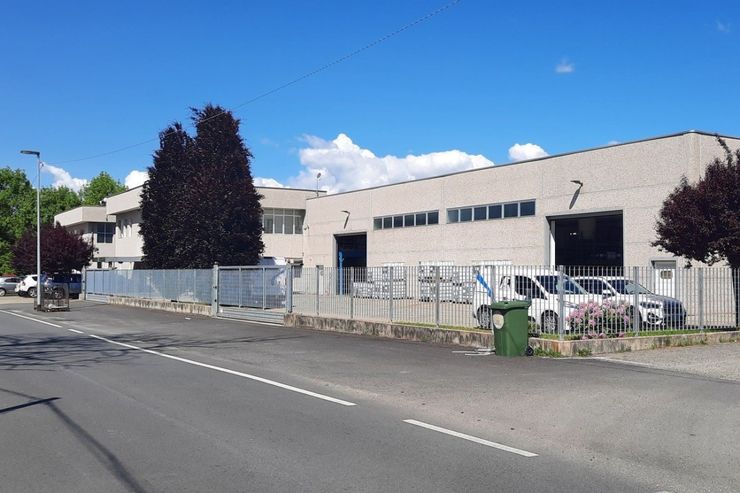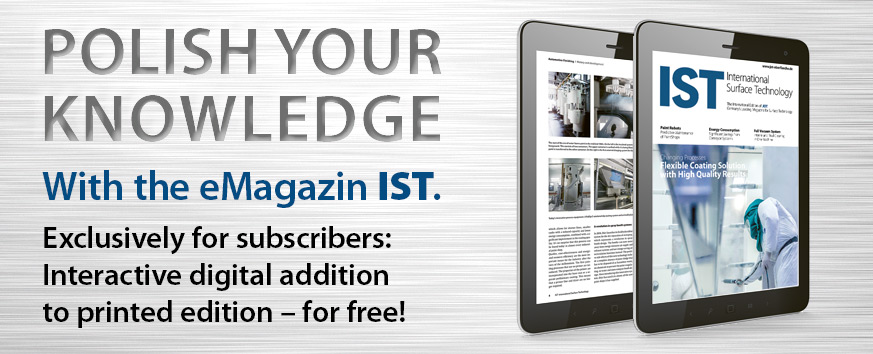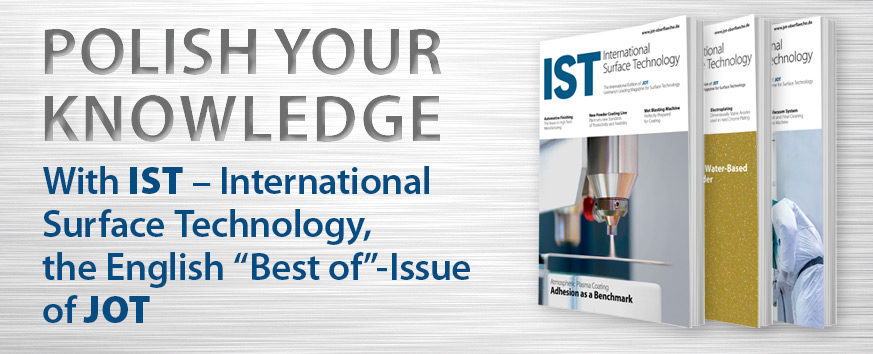On the occasion of the JOT anniversary, we asked a proven expert in the industry to point out where industrial parts cleaning could develop in the next two decades. Our author has summarised his ideas on this in eight theses. The long version of the article can be found in German in the anniversary issue of JOT.
1. Cleanliness becomes more important and more defined
More people on our planet also means that more pollution and impurities of all kinds are produced. Consequently, the differentiation and separation of desired and undesired substances, of recyclable and waste materials is becoming more and more important - as well as the technologies for separation, which includes cleaning. In the context of quality assurance, process stability or product safety, it will become increasingly important to bring components or products to a defined cleanliness level. As a result, there will be more and more cleanliness specifications or limit values which must then be achieved with the appropriate cleaning technology.
2. Cleanliness will be monitored more
The cleanliness required of the products must not only be specified with limit values, but must also be checked within the framework of quality assurance and that with the highest possible comparability in global supply chains. In the automotive industry, this has been common practice for almost 20 years in testing particle cleanliness and is regulated by VDA 19.1. The methods laid down here are increasingly being used in other sectors, such as medical technology. In the coming years, filmic/chemical residues will continue to gain in importance. The corresponding testing technology for monitoring the filmic/chemical surface cleanliness in the customer-supplier relationship is currently being developed to series-production readiness and could become as widespread in the next few years as has already been the case with particles. For industrial parts cleaning, this development means that the quality or chemical cleanliness of the cleaning and rinsing baths is becoming more important so that the cleaned substances cannot be deposited on the components again via the cleaning media used. Safely demulsifying cleaners, reliably working oil separators or chemically very clean rinsing baths for high demands will be indispensable for this. The high cleanliness of the media, which will be required for some cleaning tasks, can no longer be guaranteed by random cleanliness analyses in the laboratory. In the future, this will require more sensor technology which monitors the quality of the baths directly in the cleaning system, initiates the replenishment of cleaner components or the bath change, and helps to match the respective cleaning process exactly to the respective cleaning batch.
3. Cleaning technology becomes more intelligent
A general trend in all areas of production technology, increasing digitalisation, will of course not stop at industrial parts cleaning. In the future, however, not only data from the cleaning plant itself will be used, but also information from pre-processes. In this way, knowledge about the input contamination of the components can be used to carry out a cleaning process really in line with requirements and to optimise the cleaning time, energy consumption and thus the cleaning costs. But also with regard to the combination of different components into wash lots, the sequence of processing or the prioritisation of cleaning jobs, up to the distribution of cleaning jobs to different plants, digitalisation will bring great benefits in order to use future cleaning plants efficiently.
4. Understanding the process chain is becoming increasingly important
Up to now, the process chain with regard to the cleanliness of a component is usually only looked at after the cleaning system. However, extensive testing of technical cleanliness in countless company and service laboratories has shown more and more frequently that not every component can be cleaned to every desired state of cleanliness, and certainly not at economically justifiable expense. In the future, progress can only be made in this area if the component itself and its manufacture are also intensively dealt with, i.e. the process chain before cleaning.
5. The myth of "clean construction" is disenchanted
If you think that you only have to teach a developer or designer a few basics about "cleanable design" or "hygienic design" and then you get the desired "sparkling clean" parts from the cleaning system, you will be wrong in most cases. The basis for these approaches are simple geometries, good accessibility for the cleaning medium for all relevant component areas and a smooth and resistant surface. This can be implemented very well if you think of dishes in a dishwasher, for example. But how can such approaches be used to design a cylinder head for a combustion engine? How can you avoid internal channels and intersecting bores in a hydraulic control block? Components will continue to be designed and constructed strictly according to their function in the future, and the cleaning process will continue to have to meet the resulting requirements, i.e. "cleanable design" will probably remain a wishful thinking for the vast majority of parts in the future. This does not mean, however, that we can release designers and planners from their responsibility just because technical components cannot usually be pressed into a "hygienic design". On the contrary, it is often precisely small design or planning aspects that can simplify or complicate the cleaning of a component.
6. Cleaning processes are simulated
What in many other applications has been part of the established tools of the trade for years is still rather exotic in cleaning technology: the use of simulation technology. But especially in cleaning technology, this technology would bring many advantages. Cleaning processes could be adapted to the component geometry by the flow guidance, cleaning racks or baskets could be ideally designed or cleaning times could be calculated. Even the pure visualisation of cleaning processes could contribute a lot to the understanding of the customers and make it easier for the manufacturers of equipment to address the problems to be solved. In a few years it will be standard practice to use simulation programs interactively with the customer when planning cleaning systems. This is at least true for spray, rinse and immersion applications. For the simulation of ultrasonic cleaning, it may take a little longer, as the physical relationships are still somewhat more complex and are not simply an extension of established fluid dynamics programs.
7. Many things have proven themselves and will remain
Classically, industrial parts cleaning technology is associated with liquid cleaning media such as solvents or water with detergents. There will be no alternative for most applications in the future. The concepts of how cleaning systems are constructed today depending on the application, for example as continuous spraying systems, chamber systems with pressure flooding, spraying and ultrasound or multi-bath ultrasonic immersion systems, will also exist in the future because they have proven themselves over years or decades. Many cleaning systems can also be adapted to future requirements by retrofitting or expanding, for example by installing higher quality filters or more modern, intelligent controls. Most of the principles of how cleaning systems can be constructed and operated in an energy-efficient and environmentally friendly manner are also known and available today. To what extent these concepts will be used in the future will be decided by energy prices or regulatory requirements. However, there are also limits to the energy savings that can be achieved through the cleaning process itself. Although it will be based on the existing cleaning technology, there will be some cleaning tasks that will be extremely complex and costly, for example in combination with an appropriate cleanliness analysis, a sufficiently clean environment or packaging with the highest cleanliness requirements. In these cases, not every company will be able or willing to afford the corresponding cleaning or purification technology, so that in future there will be more specialised cleaning service providers with the corresponding, if necessary mobile, infrastructure.
8. Cleaning becomes drier
But there are also cleaning tasks that cannot be solved with liquids. One example is assembly-integrated cleaning, where components are assembled into modules and undesirable particles are produced by the joining processes used. Here, liquid cleaning is usually no longer possible, as drying such assemblies would be extremely difficult. In such and similar cases, various dry, locally acting cleaning methods have already established themselves in recent years, such as cleaning with lasers, with atmospheric pressure plasma or with the CO2 snow jet. Even blowing off with partly ionised compressed air with fixed or rotating nozzles is a very special field of cleaning technology, which has developed in a dynamic way in the last few years and will continue to gain in importance in the coming years. The increasing electrification of vehicles also increases the demand for dry cleaning processes.
Conclusion
The demand for clean components and products will continue to grow strongly. As diverse as the term cleanliness is, the cleaning technology will be just as diverse. The better the understanding of what exactly is disturbing, the more targeted cleaning will be. General trends such as automation and digitalisation will continue to make their way into cleaning technology, as they do in every other manufacturing technology. In short, the cleaning technology of the future will gain in importance, will become more intelligent and the applications and technologies will be more diverse.
Autor(en): Dr.-Ing. Markus Rochowicz, Fraunhofer IPA






